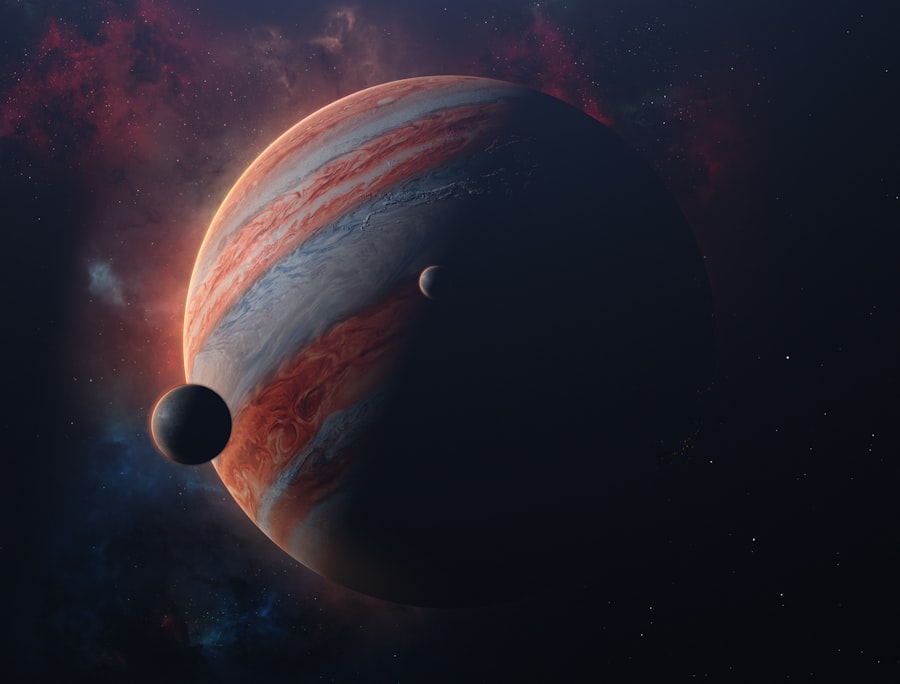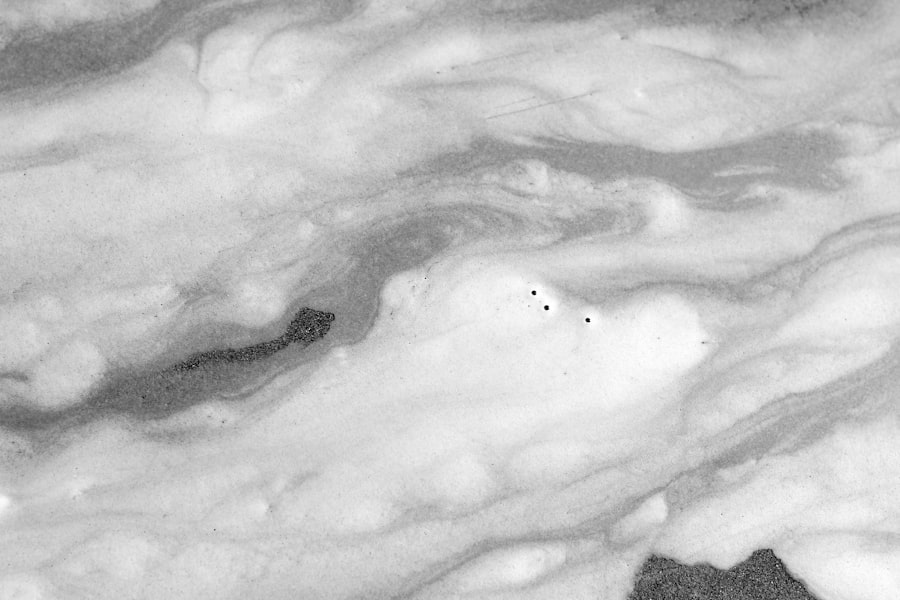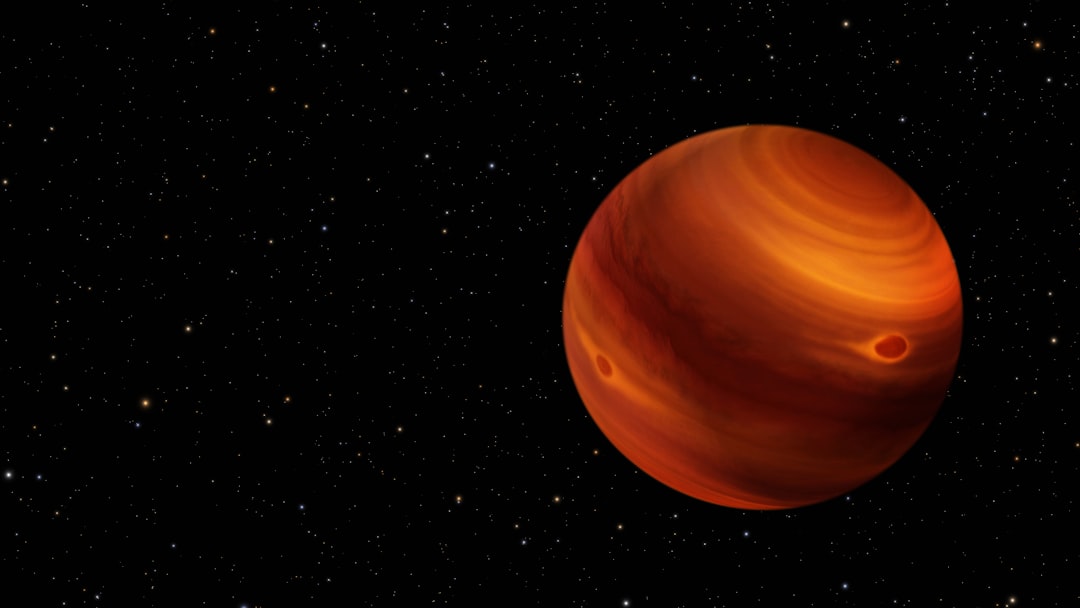Jupiter, the largest planet in the solar system, has long captivated the interest of astronomers and planetary scientists alike. Its immense size and striking features, such as the Great Red Spot and its numerous moons, mask a complex and intriguing interior that remains largely shrouded in mystery. Understanding Jupiter’s interior is crucial not only for comprehending the planet itself but also for gaining insights into the formation and evolution of the solar system as a whole.
The layers of gas, liquid, and solid that make up Jupiter’s interior present a unique challenge for researchers, who strive to piece together the planet’s history and its dynamic processes. The study of Jupiter’s interior is particularly significant because it offers clues about the planet’s formation and the conditions that prevailed in the early solar system. Unlike terrestrial planets, which have solid surfaces, Jupiter is a gas giant composed primarily of hydrogen and helium.
This composition raises questions about the nature of its core, the dynamics of its atmosphere, and how these factors interact to shape the planet’s overall structure. As scientists delve deeper into the mysteries of Jupiter’s interior, they uncover not only the secrets of this giant planet but also the broader implications for planetary science.
Key Takeaways
- Jupiter’s interior is composed of a core, mantle, and atmosphere, with the core being the densest region.
- The core of Jupiter is believed to be made up of heavy elements such as rock and metal, surrounded by a layer of metallic hydrogen.
- Jupiter’s atmosphere plays a crucial role in shaping the planet’s interior dynamics, including its weather patterns and magnetic field.
- The Great Red Spot, a massive storm in Jupiter’s atmosphere, has a significant impact on the planet’s interior through its influence on atmospheric circulation.
- Jupiter’s powerful magnetic field extends far into space and has a profound influence on the planet’s interior dynamics and its relationship with its moons.
The Composition of Jupiter’s Core
At the heart of Jupiter lies its core, a region that has been the subject of much speculation and research.
This metallic hydrogen is formed under extreme pressure and temperature conditions, which are prevalent in the depths of this massive planet.
The exact size and composition of the core remain uncertain, with estimates ranging from a small, dense core to a more substantial one that could be several times the mass of Earth. The presence of heavy elements in Jupiter’s core is particularly intriguing. These elements are thought to have played a significant role in the planet’s formation, as they would have influenced the accretion process during the early stages of solar system development.
Understanding the core’s composition not only sheds light on Jupiter itself but also provides valuable information about the formation of gas giants in general. As researchers continue to analyze data from missions like Juno, they hope to refine their models and gain a clearer picture of what lies beneath Jupiter’s swirling clouds.
The Role of Jupiter’s Atmosphere

Jupiter’s atmosphere is a dynamic and complex system that plays a crucial role in shaping the planet’s interior. Composed primarily of hydrogen and helium, with trace amounts of other gases such as methane, ammonia, and water vapor, the atmosphere exhibits striking features such as bands of clouds, storms, and vortices. These atmospheric phenomena are not merely surface-level occurrences; they have profound implications for the planet’s internal structure and energy distribution.
The interaction between Jupiter’s atmosphere and its interior is driven by convection processes that transport heat from the planet’s core to its outer layers.
The immense pressure and temperature gradients within Jupiter create a complex interplay between different layers of gas, leading to the formation of powerful storms and jet streams.
Understanding these processes is vital for unraveling the mysteries of Jupiter’s interior and how it influences atmospheric behavior.
The Great Red Spot and its Impact on Jupiter’s Interior
| Metrics | Data |
|---|---|
| Diameter of the Great Red Spot | 16,350 miles |
| Duration of the storm | Over 300 years |
| Impact on Jupiter’s atmosphere | Stirring up gases and creating high-speed winds |
| Depth of the Great Red Spot | Unknown, but it extends into the atmosphere |
| Temperature of the storm | Cooler than surrounding areas |
One of Jupiter’s most iconic features, the Great Red Spot, is a massive storm that has been raging for centuries. This colossal anticyclonic storm not only captivates observers with its vibrant colors but also serves as a window into the planet’s interior dynamics. The Great Red Spot is believed to be fueled by heat rising from deeper layers of Jupiter, suggesting a direct connection between this atmospheric phenomenon and the planet’s internal structure.
The longevity and stability of the Great Red Spot raise questions about its impact on Jupiter’s interior. Some researchers propose that this storm may play a role in redistributing heat within the atmosphere, which could influence convection patterns in the deeper layers. Additionally, studying the Great Red Spot provides insights into how energy flows through Jupiter’s atmosphere and how these processes may affect its overall thermal structure.
As scientists continue to monitor this storm, they hope to uncover more about its relationship with Jupiter’s interior.
The Magnetic Field and its Influence on Jupiter’s Interior
Jupiter possesses an incredibly strong magnetic field, which is generated by the motion of metallic hydrogen within its interior. This magnetic field is not only one of the most powerful in the solar system but also extends far beyond the planet itself, creating a vast magnetosphere that interacts with solar wind and cosmic radiation. The dynamics of this magnetic field are closely tied to the processes occurring within Jupiter’s interior.
The generation of Jupiter’s magnetic field is thought to be linked to convection currents in its metallic hydrogen layer. As these currents flow, they create electric currents that generate magnetic fields through a process known as dynamo action. Understanding how this magnetic field is produced provides valuable insights into the behavior of materials under extreme conditions found within gas giants.
Moreover, studying Jupiter’s magnetosphere can reveal information about how energy is transferred from the interior to the atmosphere, further illuminating the intricate connections between these two regions.
The Formation and Evolution of Jupiter’s Interior

The formation of Jupiter is a topic that has intrigued scientists for decades. Current theories suggest that it formed from the accumulation of gas and dust in the early solar system, eventually coalescing into a massive body capable of attracting significant amounts of hydrogen and helium. This process likely involved complex interactions with other celestial bodies and gravitational forces that shaped its growth over millions of years.
As Jupiter evolved, its interior underwent significant changes due to factors such as heat retention from its formation and ongoing gravitational compression. The differentiation of materials within its interior led to the development of distinct layers, including a solid core surrounded by metallic hydrogen and an outer gaseous envelope. Understanding this evolutionary process is essential for comprehending not only Jupiter but also other gas giants in our solar system and beyond.
The Relationship between Jupiter’s Interior and its Moons
Jupiter’s moons provide an additional layer of complexity to understanding its interior. With over 79 known moons, including four large Galilean moons—Io, Europa, Ganymede, and Callisto—these celestial bodies exhibit diverse geological features that may be influenced by their interactions with Jupiter itself. The gravitational pull exerted by Jupiter affects tidal heating on these moons, which can lead to geological activity and even subsurface oceans.
The relationship between Jupiter’s interior and its moons is particularly evident in Europa, where scientists speculate that an ocean beneath its icy crust may be kept warm by tidal forces generated by Jupiter’s immense gravity. This connection highlights how understanding Jupiter’s internal structure can provide insights into the potential habitability of its moons. As researchers continue to study these celestial bodies, they aim to unravel how their geological processes are intertwined with those occurring within Jupiter.
The Impact of Juno Mission on Understanding Jupiter’s Interior
The Juno mission has revolutionized our understanding of Jupiter’s interior since it arrived at the planet in 2016. Equipped with advanced scientific instruments designed to probe beneath the thick cloud cover, Juno has provided unprecedented data on various aspects of Jupiter’s structure and composition. By measuring gravitational fields, magnetic fields, and atmospheric dynamics, Juno has begun to unveil some of the long-standing mysteries surrounding this gas giant.
One significant finding from Juno’s observations is related to the distribution of mass within Jupiter’s interior. Preliminary data suggests that there may be an extended core region rather than a distinct solid core as previously thought. This revelation has implications for models of gas giant formation and challenges existing theories about how such planets develop over time.
As Juno continues its mission, scientists anticipate further discoveries that will deepen their understanding of both Jupiter’s interior and gas giants in general.
The Challenges of Studying Jupiter’s Interior
Studying Jupiter’s interior presents numerous challenges due to its immense size, distance from Earth, and hostile environment. The thick atmosphere obscures direct observations, making it difficult for scientists to gather data about what lies beneath. Additionally, the extreme pressures and temperatures found within Jupiter create conditions that are challenging to replicate or simulate on Earth.
Another significant challenge lies in interpreting data collected from missions like Juno. The complexity of Jupiter’s internal structure means that researchers must rely on sophisticated models to analyze gravitational and magnetic field measurements accurately. These models require constant refinement as new data becomes available, making it an ongoing process filled with uncertainties.
Despite these challenges, scientists remain committed to unraveling the mysteries hidden within this gas giant.
The Potential Implications of Understanding Jupiter’s Interior
Gaining insights into Jupiter’s interior holds far-reaching implications for planetary science as a whole. By understanding how gas giants like Jupiter form and evolve, researchers can refine their models for other exoplanets discovered beyond our solar system. This knowledge could help identify potentially habitable worlds or provide context for understanding planetary systems around distant stars.
Moreover, studying Jupiter’s interior can enhance our comprehension of fundamental processes governing planetary atmospheres and magnetic fields across various celestial bodies. Insights gained from this research may also inform future exploration missions aimed at investigating other gas giants or icy moons within our own solar system. Ultimately, unraveling the mysteries surrounding Jupiter’s interior could reshape our understanding not only of this magnificent planet but also of planetary formation throughout the universe.
Unveiling the Mysteries of Jupiter’s Interior
In conclusion, exploring Jupiter’s interior remains one of the most exciting frontiers in planetary science today. From its enigmatic core composition to its dynamic atmosphere and powerful magnetic field, each aspect contributes to a greater understanding of this gas giant’s nature and evolution over time. As missions like Juno continue to provide invaluable data, researchers are poised to make significant strides in deciphering these mysteries.
The journey toward understanding Jupiter’s interior is not just about uncovering facts; it represents humanity’s quest for knowledge about our place in the cosmos. By piecing together clues from this distant world, scientists hope to illuminate not only what lies beneath its swirling clouds but also how similar processes may shape other planets throughout our galaxy. As we continue to explore these celestial wonders, each discovery brings us closer to unveiling the secrets held within one of our solar system’s most captivating giants.
In recent studies, scientists have been delving deeper into the mysteries of Jupiter’s hidden structure, revealing fascinating insights about the gas giant’s internal composition and dynamics. These findings are crucial for understanding not only Jupiter itself but also the formation and evolution of other planetary bodies in our solar system. For those interested in exploring more about the latest discoveries and theories surrounding Jupiter’s enigmatic core, a related article can be found on XFileFindings, which provides an in-depth analysis of the current research and its implications for planetary science.
WATCH THIS! 🧮🔭The Lost Math That Proves Jupiter Is A Giant Alien Machine
FAQs
What is Jupiter’s hidden structure?
Jupiter’s hidden structure refers to the interior composition of the planet, including its core, mantle, and atmosphere, which are not visible from the surface.
What is the core of Jupiter like?
Jupiter’s core is believed to be a solid, rocky mass that is surrounded by a layer of metallic hydrogen. The core makes up a relatively small portion of the planet’s overall mass.
What is the mantle of Jupiter composed of?
The mantle of Jupiter is primarily made up of liquid metallic hydrogen, which is a state of hydrogen that can conduct electricity. This layer is thought to be quite thick and extends from the core to the outer atmosphere.
What is the atmosphere of Jupiter like?
Jupiter’s atmosphere is composed mainly of hydrogen and helium, with trace amounts of other gases. It is characterized by colorful bands and swirling storms, including the famous Great Red Spot.
How do scientists study Jupiter’s hidden structure?
Scientists study Jupiter’s hidden structure using a variety of methods, including spacecraft missions, telescopic observations, and computer simulations. Data from these sources help to build models of the planet’s interior.
